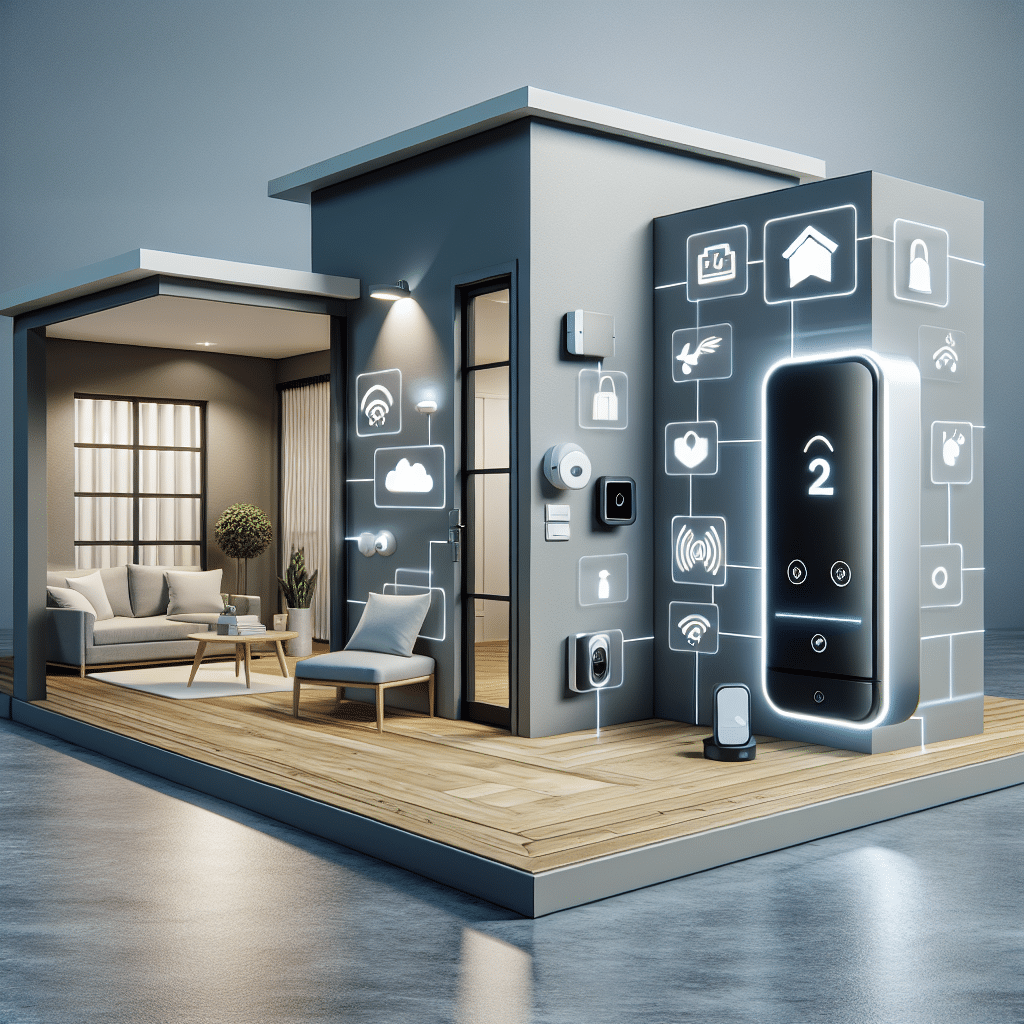Understanding Smart Alarm Systems for Home Security
1. What is a Smart Alarm System?
Smart alarm systems are advanced security solutions that integrate with home automation platforms. Unlike traditional alarms, these systems offer features like remote monitoring, app notifications, and integration with other smart devices. By leveraging wireless technology, users can enhance their home security with minimal hassle.
2. Key Features of Smart Alarm Systems
- Real-Time Alerts: Receive instant notifications on your smartphone when a breach is detected.
- Remote Access: Control alarm settings from anywhere via mobile applications.
- Integration with Smart Devices: Link with cameras, lights, and locks for an integrated security approach.
- Video Surveillance: Many systems come with IP cameras for real-time video monitoring.
- Two-Way Audio: Communicate via the smart alarm system, allowing for interaction with visitors or potential intruders.
3. Types of Smart Alarm Systems
- Standalone Systems: These units function independently but can connect to your Wi-Fi for notifications.
- Integrated Systems: Work alongside home automation systems such as Amazon Alexa or Google Assistant.
- DIY Systems: Allow homeowners to install and manage their own security solutions without professional help.
- Professional Monitoring Systems: Offer 24/7 monitoring services with quick response times for emergencies.
4. Benefits of Smart Alarm Systems
- Enhanced Security: Protect your property more effectively compared to traditional alarms.
- Cost-Effective: Although initial investments may be higher, long-term savings on professional monitoring can be significant.
- User-Friendly: Most systems are designed with intuitive interfaces, making them accessible to non-technical users.
- Customizability: Personalize alerts, system settings, and device connections to fit your specific needs.
5. How Smart Alarm Systems Work
Smart alarm systems typically consist of several interconnected components, including sensors, cameras, and a control panel. Sensors placed on doors and windows will notify the control panel when accessed. This panel communicates with your mobile device through Wi-Fi or cellular networks, providing real-time updates on security status.
6. Installation and Setup
Homeowners can choose between self-installation and professional setups. Self-install options typically involve placing sensors and cameras as per a provided guide. Professional installations might be pricier, but they ensure that all devices are installed optimally, often including a training session for the user.
7. Factors to Consider When Choosing a Smart Alarm System
- System Compatibility: Ensure the system integrates seamlessly with other smart home devices you own.
- Monitoring Options: Decide whether you prefer self-monitoring apps or professional monitoring services.
- Scalability: Choose a system that allows for easy addition of new devices.
- Battery Backup: Select systems with battery backups to keep them operational during power outages.
8. Top Smart Alarm System Brands
- Ring: Known for its strong integration with video doorbells and cameras, Ring offers customizable alarm systems that are user-friendly.
- SimpliSafe: A leader in DIY home security, providing various packages suitable for different home sizes and security needs.
- ADT: Offers a range of smart alarm systems with robust professional monitoring, known for reliability.
- Nest Secure: Part of the Google ecosystem, Nest Secure integrates with other products, providing a seamless experience for users.
9. Smart Alarm System Accessories
- Cameras: Indoor and outdoor cameras provide additional layers of security, allowing homeowners to view real-time footage.
- Smart Locks: These can eliminate the need for physical keys, providing a higher level of access control.
- Motion Detectors: Detect unusual movements and send alerts to homeowners.
- Glass Break Sensors: These sensors detect the sound of breaking glass, alerting owners to potential entry points being violated.
10. Cost Considerations
Initial pricing for smart alarm systems can range from a few hundred to several thousand dollars, depending on the brand and features included. Monthly monitoring fees can also vary widely, starting from $10 to $50, based on the level of service provided. It’s essential to evaluate your budget against the features that matter most to you.
11. Legal and Privacy Considerations
When utilizing smart alarm systems with video surveillance capabilities, homeowners must comply with legal regulations regarding privacy. This often includes notifying guests of their presence and understanding where cameras are placed. Encrypted connections can further secure user data and privacy.
12. Maintenance and Support
Regular maintenance is key to ensuring long-term functionality. Many manufacturers offer customer support services to assist with any issues or troubleshooting. Routine checks of batteries and system functionalities will help keep your home secure.
13. Transitioning to a Smart Alarm System
Transitioning from a traditional alarm system to a smart one involves evaluating the effectiveness of your current setup and determining which components you wish to retain. Whether it’s retaining existing sensors or replacing the entire system, consider features that will address any previously identified vulnerabilities in your home security.
14. User Experiences and Testimonials
Many users report heightened peace of mind after switching to smart alarm systems. Testimonials often highlight the convenience of remote access and the reassurance provided by real-time alerts. Users appreciate the ability to monitor live feeds and communicate with family members or pets while away from home.
15. Future Trends in Smart Alarm Systems
Given the rapid advancement of technology, future smart alarm systems may include artificial intelligence features, more sophisticated integration with IoT, and advanced analytics that can predict and prevent potential threats based on user behavior patterns.
16. Conclusion
The rise of smart alarm systems has transformed home security, making it more accessible and efficient. Whether you are a first-time buyer or looking to upgrade your existing setup, investing in a smart alarm system provides improved safety features and peace of mind for modern homeowners. By considering various factors, researching top brands, and understanding your specific needs, you can choose the best smart alarm system to secure your home effectively.
